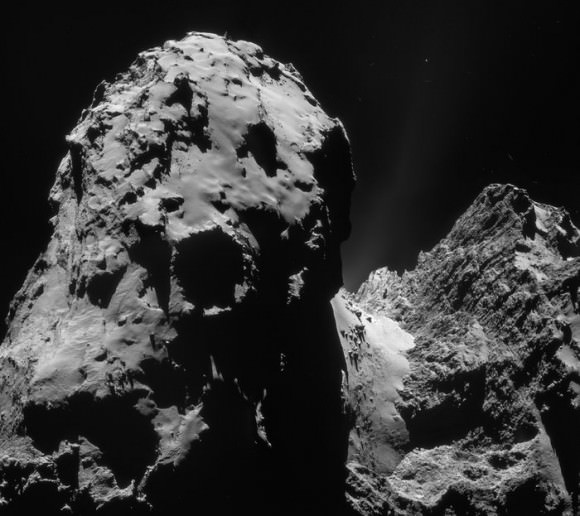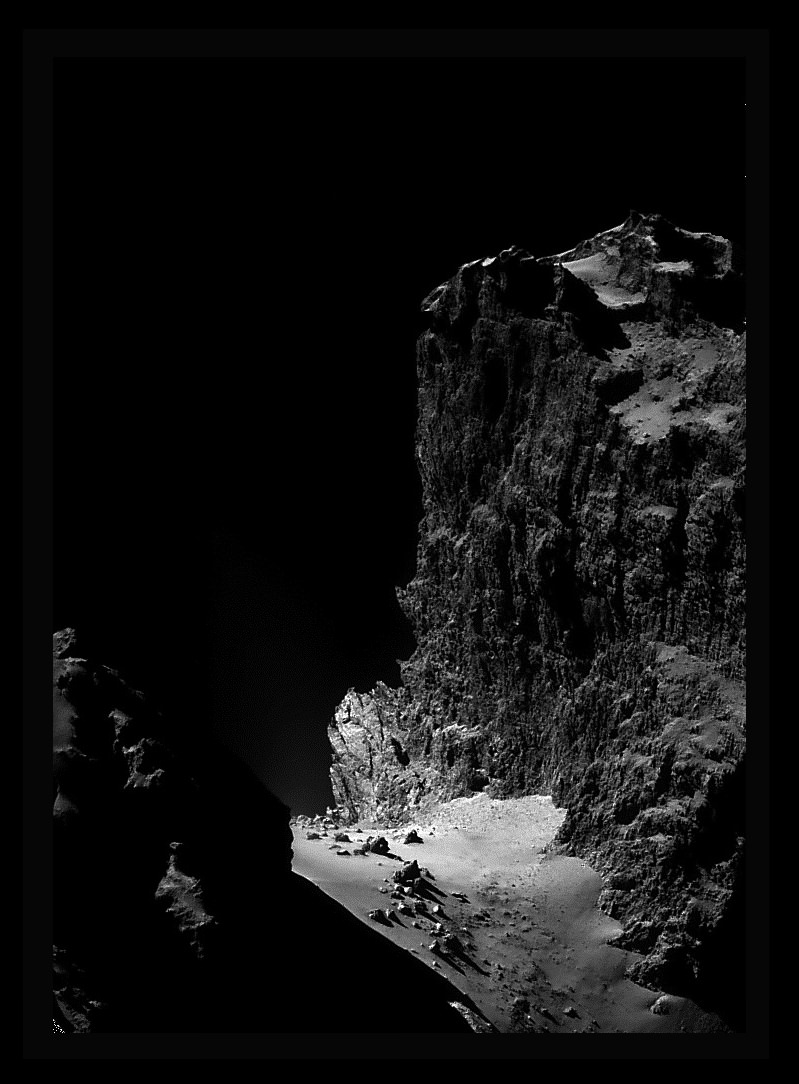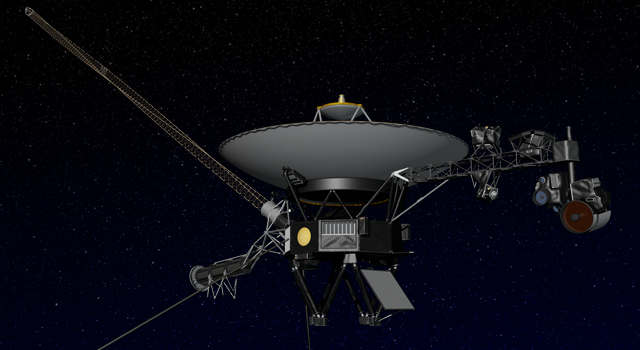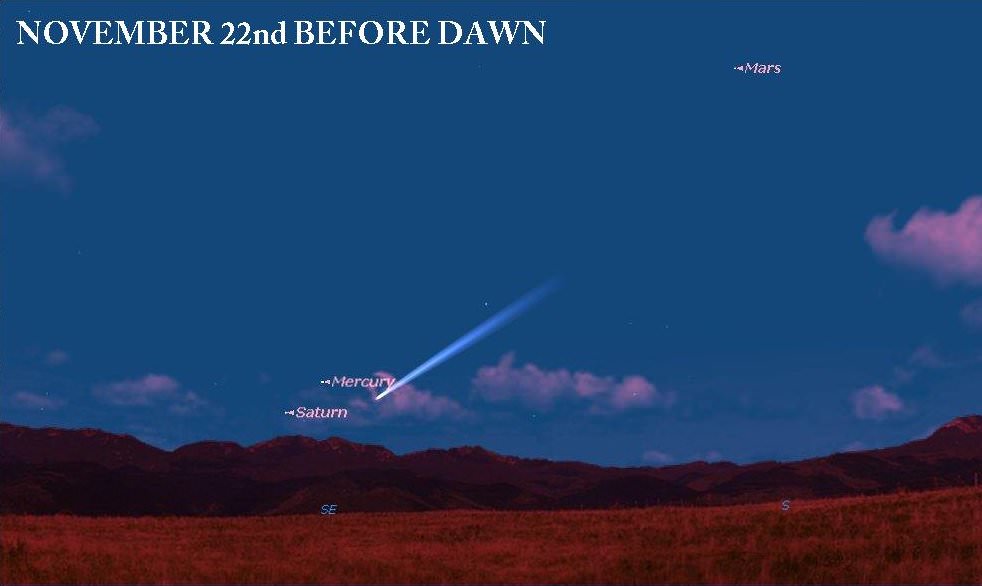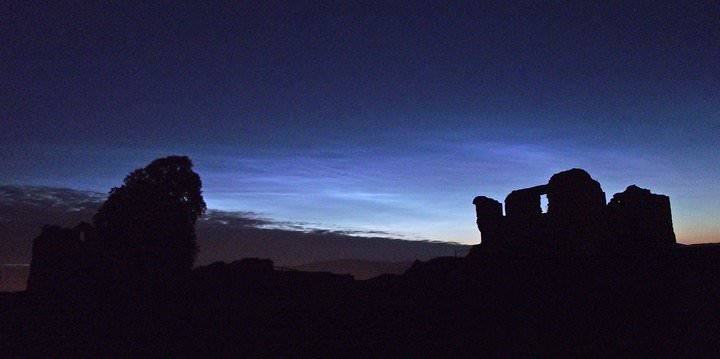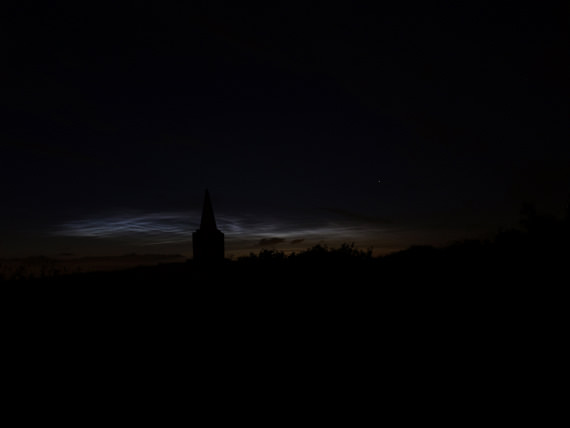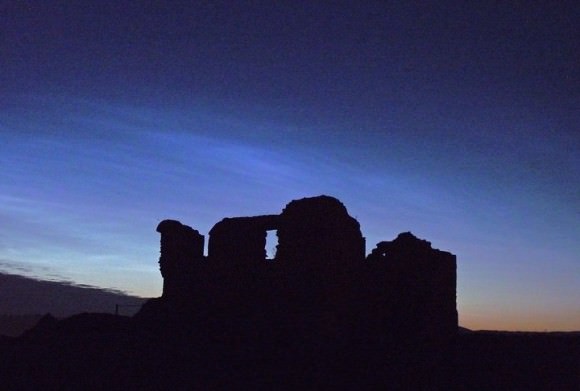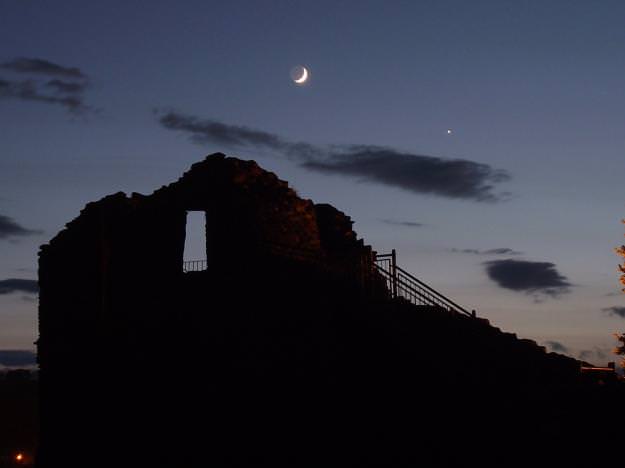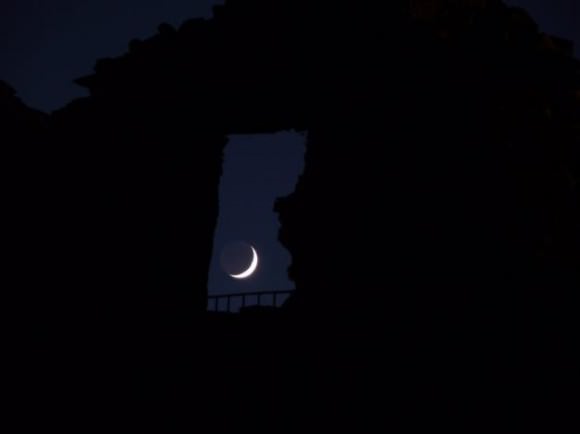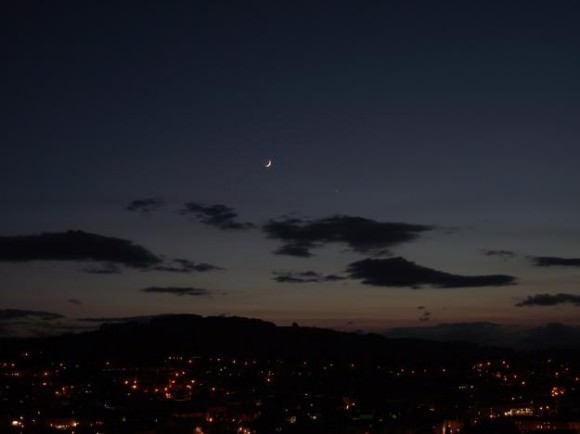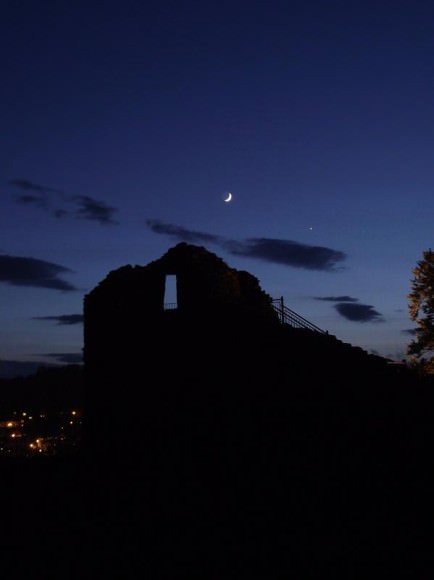An image generated from Starry Night software of how Comet ISON may look on November 22, 2013 from the UK.
Editor’s note: This guest post was written by Stuart Atkinson, a space and astronomy enthusiast who blogs at Cumbrian Sky, Road to Endeavour, which follows the Opportunity rover, and The Gale Gazette which discusses imagery from the Curiosity rover.
Unless you’ve been cut off from the internet today you’ll have heard about The Comet. No, not Comet PANSTARRS, which is due to shine in the sky next March, perhaps rivalling the fondly-remembered Comet Hale Bopp from 1996, but another comet. Comet 2012/S1, or “Comet ISON” to give it its full name. It’s everywhere you look on Twitter, Facebook, Google Plus. Why? Because initial calculations of its orbit show it will pass ridiculously close to the Sun next November, skimming the solar surface at a height of just under two million kilometres. And that means it might shine jaw-droppingly bright in the sky at that time, before it heads back off into deep space again.
So, of course, adding two and two to get fifty, there are lots of people getting more excited about this comet than a dog in a lamp post factory. If you were to believe some of the comments being written about it, it is absolutely nailed-on guaranteed to shine like a welding torch in the sky next November, blazing at magnitude -16, with a tail stretching across the sky like a WW2 searchbeam.
Can we all just calm down, please?
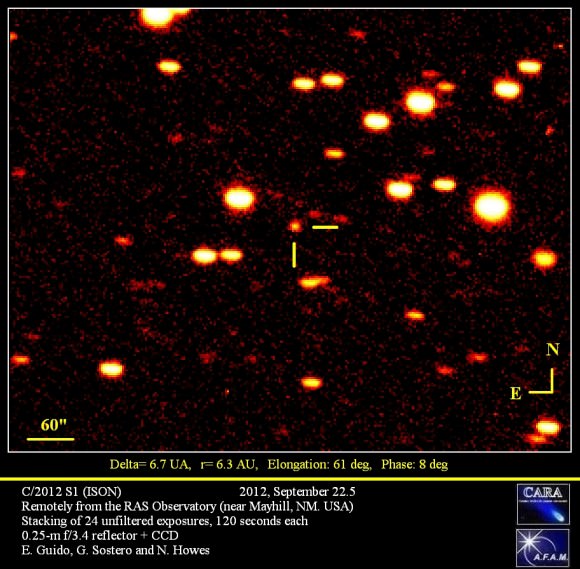
Although Comet ISON looks promising, very promising in fact, it’s very early days. It needs to be observed a lot more before we know exactly what’s in store for us, and even then what it will actually look like in the sky is impossible to predict this far ahead. You see, comets are notoriously unreliable, and love nothing better than getting astronomers on Earth all fired up with the promise of a dazzling nocturnal display before fizzling out and being so faint they need binoculars to see them. Hardly surprising, seeing as comets are essentially great big chunks of dirty ice, and we only see them because they’re melting and falling to pieces as they race around the Sun. You can’t predict how that will work out now, can you?
There’s a whole spectrum of possibilities here. At one end of that spectrum, ISON will live up to the most breathless predictions and blaze in the sky like a science fiction movie special effect. Its tail will span half the sky, becoming visible as soon as the Sun has set, and we will stand on our hillsides and in our gardens looking at it and slowly shaking our heads in wonder before we remember we’ve actually got a camera set up, and start taking pictures of it.
At the other end of the spectrum, ISON will play us all for fools, and even before its close solar flyby it will break up without developing a searchbeam tail, and we’ll all stand on our hillsides and in our gardens looking at it through binoculars and shaking our fists at it angrily, cursing its icy crust.
I think we should cross our fingers for something between the two. We should hope that ISON stays in one piece, survives its close encounter with the Sun, and shines in the twilight sky next November like another Lovejoy or McNaught. I’ll be happy with that, to be honest. Because I’m a citizen of the northern hemisphere my only views of Lovejoy were on my computer monitor, as I drooled over the images of it taken by astronomers and skywatchers in Australia and New Zealand and across the southern hemisphere. I caught a fleeting glimpse of McNaught from here in Kendal – standing in the ruins of the castle that stands above my town, I saw the comet through binoculars through a brief gap in the clouds, as I stood in the rain – but again I ‘saw’ it online rather than with my own eyes, cursing (good naturedly) all those people south of the equator who were seeing the real thing shining in their sky…
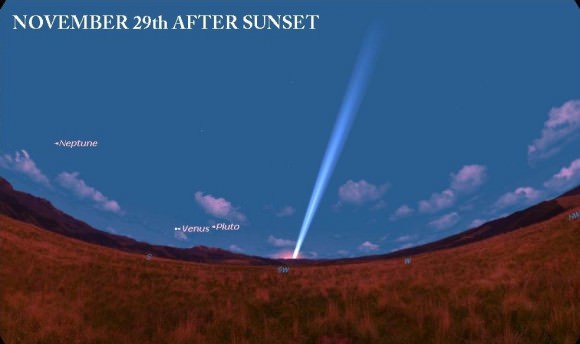
An image generated from Starry Night software of how Comet ISON may look on November 29, 2013 from the UK.
(I have to be honest here: having missed the last two Great Comets because of my latitude, when I fired up STARRY NIGHT earlier today, and stepped forward in time to next November, I experienced a rather ungentlemanly “Ha! Our turn!” moment of pure smugness as I saw that ISON’s path will carry it through my sky..!)
The best thing we can do, seriously, is just cross our fingers. Hope for the best, but prepare for…something less than that.
And yet…
Comets are magical, aren’t they? They bring out the dreamer, the optimist and the romantic in all of us. And although I’m fighting it, my head is full of images as I write this, memories of the comets I have seen before, and wondering what ISON will bring. I remember my first sighting of Halley’s Comet, on Guy Fawkes Night 1985. It was just a smudge of a blur in my binoculars, as I stood on the sports playing field near my home, breathing in the smell of bonfires and fireworks in the darkness; I remember standing in the deep, dark Cumbrian countryside, in the gravelled gateway of a farm field, and tracing out the ridiculous extent of Comet Hyakyutake’s pale green tail across the star-spattered sky; and I remember standing in the centre of the ancient Castlerigg stone circle outside Kewsick and, in perfect silence, and feeling a real connection to the watching Comet Hale-Bopp shining above the fells, its twin tails looking like they had been sprayed across the heavens by some cosmic grafitti artist…
What memories will I have after Comet ISON has flown past the Sun, I wonder…
It’s tempting to look at the elements of this comet, and to simulate its apparition using planetarium software, and to get excited. But really, let’s take it easy. I mean, we’ve been here before. Some comets in the past have promised the Earth (mentioning no names… *cough* Kohoutek *cough* ) only to pass by without any real fanfare or fuss, leaving astronomers with a lot of egg on their faces.
So, everyone, take a deep breath, and look at the calendar. ISON is going to be in the sky next November. NEXT November. That’s over a year away. Anything could happen before then.
And yet…
By Stuart Atkinson
